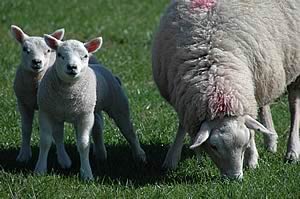 |
|||||||||
|
|||||||||||||||||||
|
|
FAO International Year of Natural Fibres 2009 The UN Organization today officially launched International Year of Natural Fibres (IYNF) 2009 to celebrate the virtues of cotton, flax, sisal and hemp, but also of wool, alpaca, camel hair and angora. And, why not, cashmere too.
IYNF – quickly dubbed Wild and Woolly 2009 – follows on IYP (International Year of the Potato), while 2004 was International Year of Rice and 2002 International Year of Mountains. All were coordinated by FAO at the request of the UN General Assembly to help promote and raise public awareness of the importance of familiar natural resources that are often taken for granted. At a ceremony launching Natural Fibres Year, Hafez Ghanem, FAO Assistant Director-General for Social and Economic Development, said production of animal and vegetable fibres was a major agricultural sector, worth some $40 billion annually to the world’s farmers. Fibres, he noted, could in some cases account for up to 50 percent of a developing country’s exports. “Farmers and processors in these countries depend on proceeds from the sales and exports of these natural fibres for their income and food security.” King Cotton Every year, some 30 million tonnes of natural fibres are farmed from animals and plants across the globe from China (cotton, wool, hemp, sisal, ramie silk etc) to the Andes (Alpaca). The biggest crop is cotton, with an annual production of some 25 million tonnes while 2.2 million tonnes of wool is produced every year in almost 100 countries, with Australia accounting for roughly a quarter of that. In volume terms, jute, which comes from the bast, or skin, of Corchorus plants, is the world’s second biggest fibre crop (2.3-2.8 million tonnes) but is worth far less than wool in terms of cash. Main producers are India and Bangladesh. Sisal, henequen and similar hard fibres are produced from the leaf of the Agave mainly in Africa, Latin America and China. Coir, the fibre from the husk of the coconut, is used in upholstery and mattresses but is finding new applications in geotextiles and composite materials. Sausages and bank notes Abaca, from the leaf stalk of a plant closely related to the banana, is produced almost entirely in the Philippines and Ecuador and, while traditionally used for rope-making, is now pulped for a range of speciality papers for sausage casings, tea bags, coffee filters and bank notes. Once of strategic economic importance – England’s rise as a world power was built on wool and textiles, while silk for centuries held a central role in international trade – natural fibres have increasingly been displaced by synthetic materials. The main objective of the International Year of Natural Fibres is to raise the profile of these fibres and to emphasise their value to consumers while helping to sustain the incomes of the farmers. Wild and woolly, in other words, is wonderful. Celebrations of IYNF will include conferences, exhibits, and fashion shows in many countries, including an International Mohair Summit in South Africa and a Creative Fibre Festival in South Caterbury, New Zealand. FAO needs funding in order to coordinate activities and provide support to partner organizations around the world and is appealing to member countries and natural fibres industries to provide support. International Year of the Potato was made possible by $800 000 in donations.
|
||||||||||||||||||

|
|
||||||||||||||||||
| home | agri-services | pedigree
pen | news | dairy | beef | machinery BPS | property | organisations | site map |
|||||||||||||||||||


